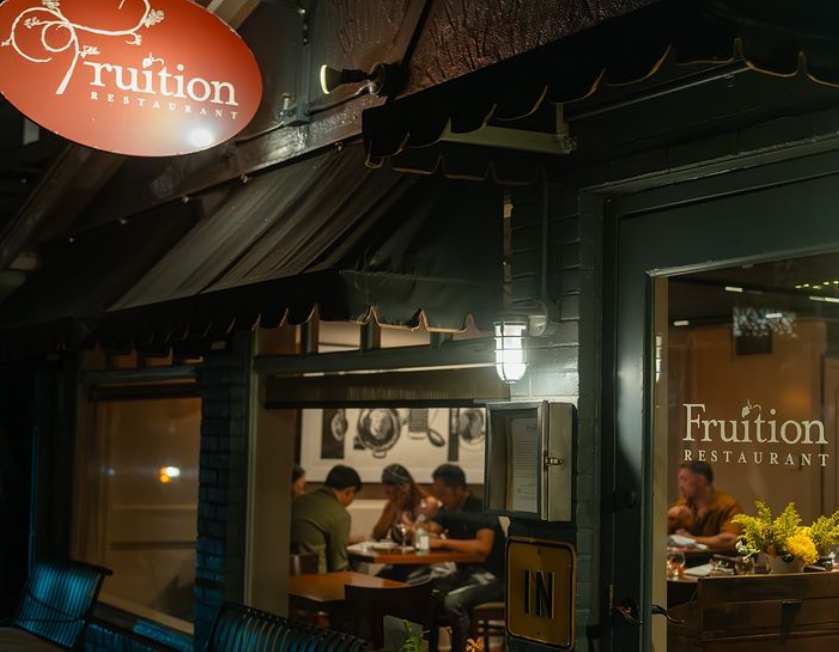
Fruition

Audio By Carbonatix
Let me begin this reflection on Denver dining with a moment of silence for the restaurants we’ve lost or are soon to lose, and allow me to eulogize a few of them for what I’ve lost, personally. Fruition, where I wrote my very last review as Westword’s restaurant critic, because I wanted to go out on a high note stuffed with carbonara. Q House, one of the first places I took my firstborn when he started eating solid food because I thought he needed a solid foundational palate of Chinese noodles. Sushi-Rama, the bar by which that firstborn still measures all restaurants, because so few of the others have conveyor belts. Brider, where I picked up lunch for my team at the Colorado Restaurant Foundation during a particularly traumatic event set-up so we could simultaneously laugh and cry into our kale salads. Stoic & Genuine, where I once played hooky so I could spend an afternoon eating two dozen oysters and drinking a full bottle of wine with a friend from China who was in town for less than 24 hours.
Live in a city long enough, and you inevitably see some of your favorite haunts become ghosts. But not so many of them. Not like this.
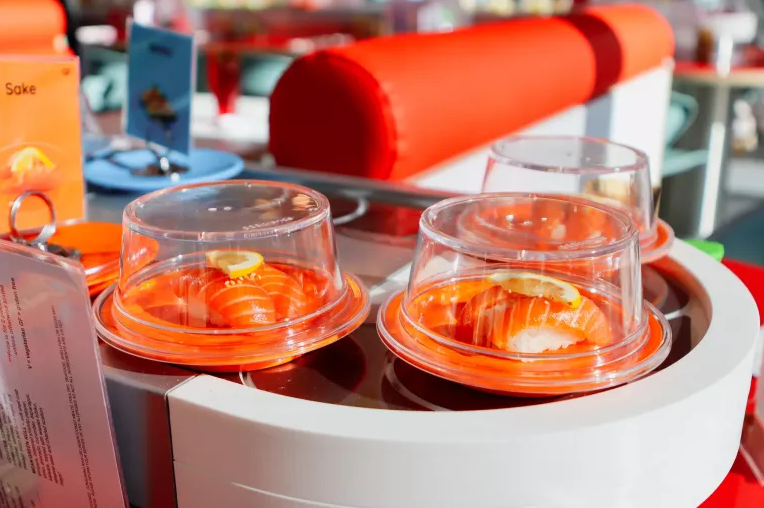
Hard Knoch PR
When I became Westword’s food critic fifteen years ago, restaurant birth notices were much more prominent than obituaries. In 2010, Denver was in the early years of a hospitality renaissance. Talented chefs were exploring and innovating, opening restaurants with daring menus and partnering with beverage masters who built cocktail, beer,and wine programs to match. Denver had long loved to socialize in its food and watering holes, and it was more than game to go out and support these trailblazing entrepreneurs: It cheered gamy offal, hot peppers, bitter liqueurs and sour beers, and asked over and over, what next? What else?
This year, make your gift count –
Invest in local news that matters.
Our work is funded by readers like you who make voluntary gifts because they value our work and want to see it continue. Make a contribution today to help us reach our $50,000 goal!
Not every dish, cocktail, restaurant worked – but the confluence of risk-taking paid off. Over the years, that swirl of talent just continued to improve, as young upstarts got the training they needed to make the leap into a new, bold concept of their own, as talent from more established culinary meccas poured in, bringing new perspective, and as peers challenged each other both competitively and collaboratively to reach for more. Quickly and surely, this began to forge a food identity for Denver, drawn as much from those kitchens as it was from the community exchange of ideas — of local farmers, world-class producers in beer and spirits, and scions from the communities that had long been engrained here: Vietnamese, Mexican, Ethiopian, and Korean restaurateurs also began to get their due as diners with expanding palates hungered for more context, more flavors, more experiences, and the ingredients and flavors from these restaurants seeped into the broader culinary canon.
I left Denver in 2012, and when I returned in 2016, I had a sense that the city had grown up, gone beyond a rising-star restaurant town to a firmly established nationally recognized dining scene. And it still seemed we were only at the beginning of something exciting – hundreds of restaurants per year continued to open, many continuing to push the gastronomic bar in Denver to ever greater heights.
Contrast that with today, not even ten years later, when we are instead losing hundreds of restaurants per year, including long-time stars that had secured hard-won institutional status. Some of Denver’s most experienced operators are now fleeing to the ‘burbs, to Texas, to consulting jobs or different industries entirely. Many who are staying are doing so only if they can offload risk, aligning with hotels or luxury developments offering a lifeline of tenant improvement allowance and the added benefit of not having to go it alone through Denver permitting. Offloading risk speaks to a dampened creative environment. Gone are the factors that made unusual but good ideas blossom and grow – the very root of what created this supreme garden of eating to begin with.
What the hell happened?
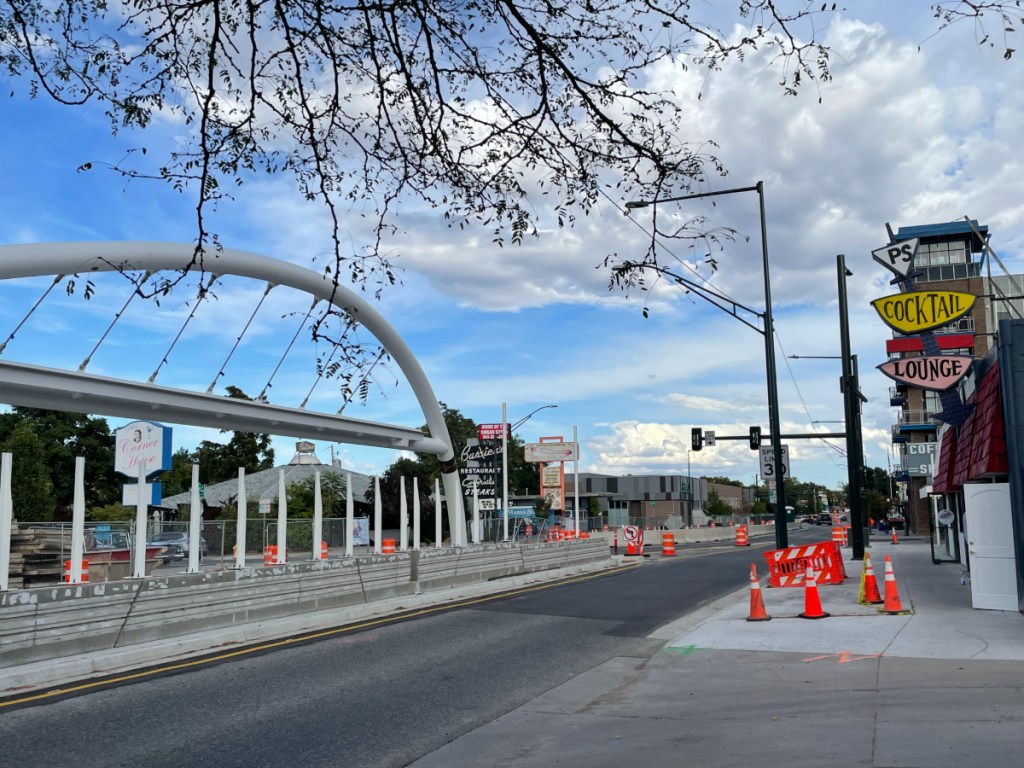
Molly Martin
In short, restaurant economics are breaking in Denver. Restaurants have three primary cost centers: labor, the actual ingredients in the food and drinks, and rent. Prevailing industry wisdom says that model operators should spend 30 cents of every dollar of revenue on labor, 30 cents on ingredients, and 30 cents on rent. The rest of their miscellaneous costs and their profit come out of that final 10 cents – which means that 3 to 5 percent profit is considered a healthy margin. I’ve talked to exemplary Denver operators in 2025 who are struggling to eke out even 1 percent… and many are operating for long stretches in the red.
This is primarily thanks to rising costs. Since COVID, the price of all three of those cost centers has gone up at a breakneck pace. Unless you’re running your own off-the-grid homestead, you’ve keenly felt ingredient costs rise over the last several years just by going to the grocery store (eggs cost HOW much these days?). In Denver, minimum wage increases are tied to the Consumer Price Index, an indicator of inflation. So just as inflation has hit the cost of ingredients, it’s very directly and very quickly driven up wages in the Mile High City. A flurry of recent state-level regulation has also increased what benefits and different types of leave are required, adding both employee-level costs as well as administrative costs for compliance. And then there’s rent: While office and housing rents have decreased here, retail rent – including restaurant rent – has continued to rise!
I’m not here to challenge your politics on any of the individual factors mentioned, but rather to say it’s the speed and breadth of the increases that are a deadly threat. Diners ultimately bear these increases, because like all businesses in America that would like to continue to operate, restaurants consider costs when setting prices. The Consumer Price Index is up 19 percent since 2021– which means you now need $1.19 to buy the same ingredients a buck would have gotten you just four years ago. Wages in Denver have grown by 27 percent over the same time period. So, of course, it’s logical that prices have jumped. But the reality is, when you’re staring down a $30 price tag on a burger and you’re thinking even the $20 you used to pay for it was kind of outrageous, it’s understandable that your reaction may be to dine out less often. Restaurants know this and many have absorbed as much of the cost increase as they possibly can themselves – hence the ever-shrinking margins and operating in the red.
Also dampening diner enthusiasm? A perception of rising crime in the heart of the city coupled with a perception of slow-to-respond law enforcement. Work-from-home policies that are leaving offices vacant and an appetite for the business lunch that’s extremely thin. GLP-1s and other weight loss drugs, which are changing what and how much people like to eat and drink. Road construction on major arteries (ahem – Colfax), making it unbearable to drive and impossible to park. People moving out of Denver and into the ‘burbs. And let’s not forget we’re all also feeling inflation in other parts of our lives.
Add to all of those challenges macroeconomic concerns like tariffs and a volatile labor market and macropolitical stresses like the specter of ICE raids, and it’s no wonder that long-time operators are throwing in the towel, and would-be entrepreneurs are finding other pursuits.
What’s so hard about this moment is the uncertainty about how we get out of it. That’s what makes 2025 the hardest operational year I can remember and puts this all in sharp contrast with the pandemic lockdown. At least during COVID there was relief money, community and optimism that the bad times would eventually come to an end. But now: Are we just around the corner from getting our mojo back? Or is this the depressing new normal? What will Denver dining look like in five years?
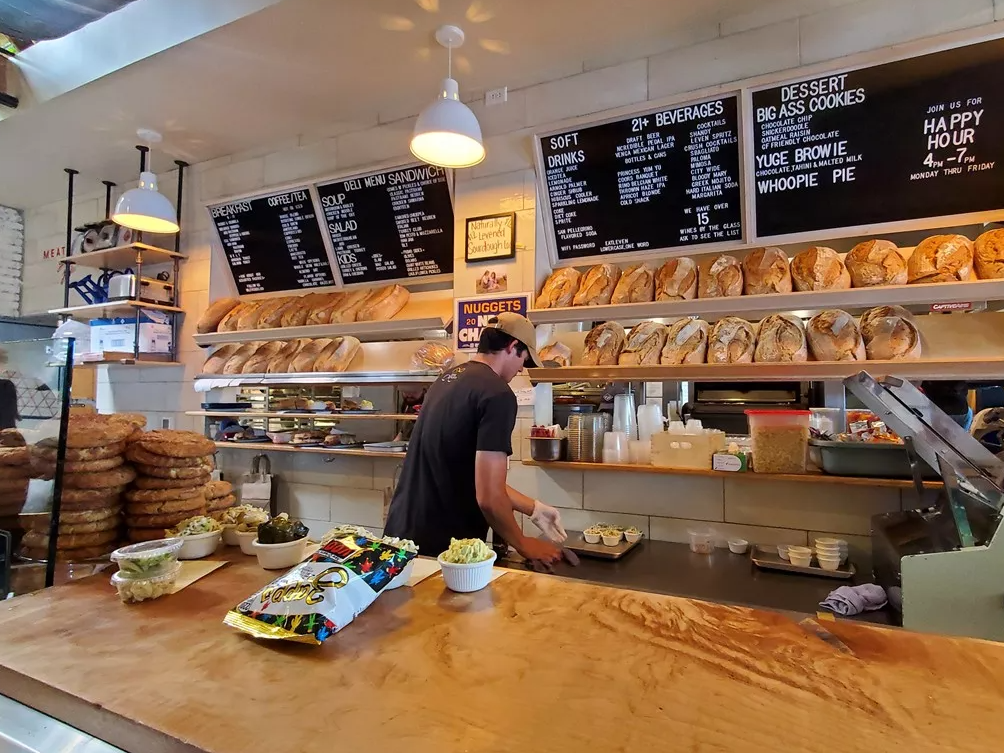
Molly Martin
Shifting tides create opportunity, and certainly no matter what happens some restaurants will find a way to navigate the current mess and thrive. Already this intense pressure has forged some diamond-grade restaurateurs – they tend to run leaner than a cash-strapped start-up, cultivate highly professional cross-trained teams, and have revenue lines outside of their core business. Leven is a good example of this, with its prepared foods and thriving take-out business. Olive & Finch is another, with its centralized kitchen operations that feed prep for its restaurants and catering business.
Ultimately, I think that the restaurants that survive will fall primarily into two camps: those who lean hard into convenience, and those who create experiences that diners return to over and over in droves.
On the convenience front: Restaurants that specialize in fast ordering, to-go food and delivery fared well during COVID, and their success hasn’t abated. Good times will likely continue to roll, even in Denver: These are places where technology really can supplant labor in a meaningful way, because the diner doesn’t care nearly as much about human interaction. These concepts will implement kiosk ordering, automate at least some components of the cooking process, and lean into robot delivery. This future is approaching — or already here at many fast-food outlets.
On the experience front: These will be places that understand they are not just offering a meal; they are providing an experience for a night out, and their value comes from being transportive. In this era, new flavor combinations or gastronomic tricks aren’t enough – diners need to build trust with restaurants to part with their hard-earned cash, and that means the hospitality part of these experiences is as important as the food. These restaurants will forge a crystal clear vision of the full experience they are trying to provide and build their operations and teams to deliver on it.
The question is, what experiences will be viable and for whom? If we continue down the path we’re on, it’s hard to imagine how the middle stays afloat – the most endangered restaurant in our time is the full-service casual restaurant, where you can get a reasonably priced meal on nights when there’s no occasion. These are generally high-labor models where technology cannot supplant your server or your cook – most people sit down in a restaurant for a truly in-person interaction and want screens to be scant. Because of our chef-driven era of restaurants, many of these restaurants also punch above their weight in food costs, because it used to be economically viable to offer high-quality ingredients in a casual environment at lower-than-fine-dining prices, and that is what the public now craves and expects. By and large, these are the restaurants that we think of when we think of places where we’re regulars. And sadly, most of these restaurants are going to have to make a choice: level up to finer dining so that they can move to a price point that supports the reality of the economics, shift to counter-service models to cut labor costs, or close.
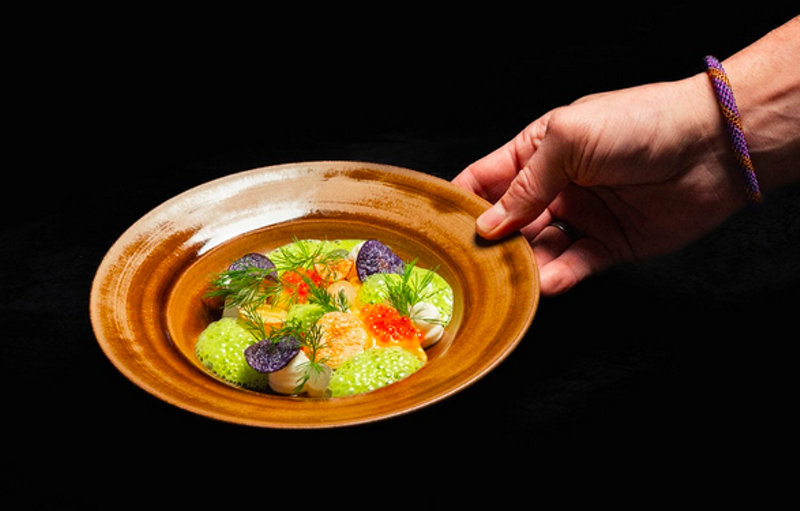
Jeff Fierberg
That will leave the high end – the restaurants with price-insensitive regulars and a steady stream of tourists and special occasion celebrants – and the chains that trade on consistency and can weather a tough economic market because of geographic diversity. Even many restaurants in these camps will decide the work is not worth the pay-out and close their doors. And let’s consider what this signals about who will be able to dine out and who will not.
But let us also, for a moment, dare to imagine better. Because it could be so much better! There is also a version of the future in which the full spectrum of restaurants – from the grab-and-go convenience shop to the three-star Michelin trailblazer, from the food stall hawking novelty to the well-worn neighborhood joint (especially the well-worn neighborhood joint!) – is alive and well. A future in which new ideas see the light of day, some of them dying because they’re truly insane and some of them just crazy enough to push everyone forward. A future in which Denver again lives its social life in food and watering holes because we can all afford to do so. A future in which Denver isn’t looking back to its halcyon pre-COVID days, but is moving forward toward something better.
We should fight for that version of the future. As our world continues to digitize, places where we can gather in person en masse become all the more essential. Restaurants provide neutral ground where we can meet our neighbors, foster relationships, and even hash out our differences, in the process strengthening our communities and keeping our streets safer simply because we’re out in them. There’s a reason why pubs and taverns feature prominently in intellectual and political movements – and there’s a reason why lots of deals are forged over a meal and a drink. Dining together fosters trust and encourages conversation. In a world where we’re all living in carefully cultivated little silos, that’s worth preserving and proliferating. For everyone.
Restaurants will have to play a significant part in creating this future, starting with building experiences that offer real value to diners. They’ll need to use cutting-edge technology and AI to tighten up their operations in service of that vision. They will need to adapt – what plays well in 2025 is different from what played well in 2015 (I’m looking at you, mocktails). And they’ll need to up their training game, both to ensure that their own restaurant delivers on its promise and to catalyze a new generation of culinary leadership.
But they’ll also need help. To hasten this future, the city could couple immediate economic relief for Denver restaurants with longer-term policies aimed at the recultivation of that entrepreneurial environment. Short-term: permitting happening in a reasonable amount of time, ratcheting back the speed at which wage changes and regulatory costs get levied, zoning changes that make providing smaller spaces with smaller rents attractive, to name a few examples. Long-term: people are more likely to take risks when they aren’t afraid of losing everything if they fail. In the early 2010s, Denver had a reputation for affordability, work-life balance that encouraged side-hustles, and a community that was out in person and in force, the happy side effect of which was a natural exchange of ideas. We need creative ways to recapture the key elements of that broader backdrop. I have some ideas, but you probably do, too – let’s hash them out over a drink and a meal. It’ll be more than the restaurants that benefit.
My true hope for the next five years? More birth notices, fewer eulogies. I hope we get our mojo back. I’m rooting for us.